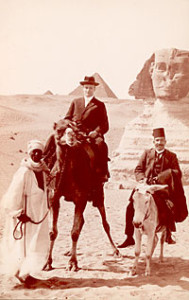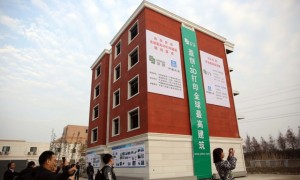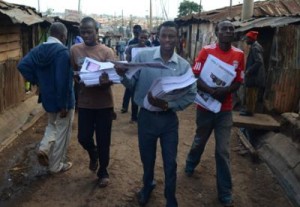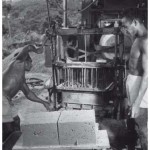National Anthropological Archives
The National Anthropological Archives and Human Studies Film Archives collect and preserve historical and contemporary anthropological materials that document the world’s cultures and the history of anthropology. Their collections represent the four fields of anthropology – ethnology, linguistics, archaeology, and physical anthropology – and include fieldnotes, journals, manuscripts, correspondence, photographs, maps, sound recordings, film and video created by Smithsonian anthropologists and other preeminent scholars.
The collections include the Smithsonian’s earliest attempts to document North American Indian cultures (begun in 1846 under Secretary Joseph Henry) and the research reports and records of the Bureau of American Ethnology (1879-1964), the U.S. National Museum’s Divisions of Ethnology and Physical Anthropology, and the River Basin Surveys. The NAA also maintains the records of the Smithsonian’s Department of Anthropology and of 25 professional organizations, including the American Anthropological Association, the American Association of Physical Anthropologists, the American Ethnological Society, and the Society for American Archaeology.
Enjoy: http://www.anthropology.si.edu/
Nicola Davison ~ 3D-Printed Cities: Is This The Future?
The words “we print architecture’s future” adorn the wall of a showroom on the outskirts of Suzhou, a rapidly urbanising city in eastern China. Arranged around the room are samples of odd-looking concrete wall of varying thickness. Outside, across the car park of this otherwise unremarkable industrial estate, is a grand, neoclassical mansion that recently became a global internet sensation . It is the world’s first 3D-printed villa.
Read more: http://www.theguardian.com/3d-printed-cities
Sam Sturgis ~ Kids In India Are Sparking Urban Planning Changes By Mapping Slums
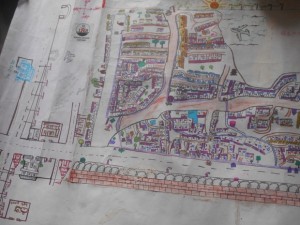
Hand-drawn maps such as this are winding up on the desks of urban planners across India. (Courtesy of Humara Bachpan)
Every kid likes to draw. But in India, young people living in slums are using their sketching skills to spur urban change.
As part of a broader civic campaign centered on “child clubs,” groups of children are creating detailed “social maps” of their marginalized neighborhoods to voice their concerns about public space, as first reported in Citiscope, a CityLab partner site.
Since 2011, UNICEF has been encouraging kids to use mobile technology and open data to map environmental and health issues near their homes. But that technology isn’t available to everyone. Instead, much of the child-led mapping campaign sweeping India today relies on old-school topography materials—paper and a rainbow-spectrum of markers.
Read more: http://www.citylab.com/kids-are-sparking
Brent Toderian ~The 100 “Best” Books On City-Making Ever Written?
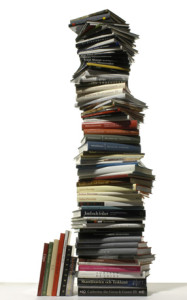 February 2015. I usually don’t associate happiness with things, “stuff,” material goods, but I have to admit that there are few things that make me happier than my books. Ever since I was a kid, I’ve loved libraries and book stores, and when I saw that a childhood friend’s home had a room full of floor-to-ceiling book shelves, I knew that one day I would have to have a room like that. It’s unlikely that I’ll ever embrace the growing trend of downloading books on tablets – for me, there’s simply nothing quite like sitting in my “library” (the enclosed balcony in our downtown apartment), surrounded by my favourite books on city-making.
February 2015. I usually don’t associate happiness with things, “stuff,” material goods, but I have to admit that there are few things that make me happier than my books. Ever since I was a kid, I’ve loved libraries and book stores, and when I saw that a childhood friend’s home had a room full of floor-to-ceiling book shelves, I knew that one day I would have to have a room like that. It’s unlikely that I’ll ever embrace the growing trend of downloading books on tablets – for me, there’s simply nothing quite like sitting in my “library” (the enclosed balcony in our downtown apartment), surrounded by my favourite books on city-making.
I like to claim that I have the most extensive library of books on urbanism of any city-making practitioner – at least for any non-professor! If anyone would care to challenge my possible self-delusion, bring it on!
Read more: http://www.planetizen.com/
The African ~ Why Is Nairobi Africa’s Smartest City?
February 2015. For a second year in a row, Nairobi has been named the most intelligent city in Africa, though it failed to make it to the world’s top seven finalists.
According to Intelligent Community Forum’s latest rankings, “intelligent communities” are those that create an economy that can prosper in the “broadband economy.”
Nairobi was the only African city to appear on their shortlist of 21 hubs throughout the world for 2015.
There were many cynical responses on social media, with many pooh-poohing crime-plagued Nairobi again as “Nairobbery” and not imagining how, given how dangerous its streets are, and the maddening traffic, it can be a “smart” city.
However, that same danger is the source of Nairobi’s creativity. Nairobi has certainly fallen behind Lagos and Johannesburg, when it comes to making money from tech innovations, but it is ahead in conjuring up the smart ideas.
It has been widely documented in recent times that Nigerian tech entrepreneurs troop to Nairobi to hatch a clever idea, then take it back home to make cash from it.
You could say Nairobi writes great recipe books, but has no chefs to cook.
Read more: http://africanmag.com/Nairobi
South African Planning Institute
 The purpose and aim of the South African Planning Institute (SAPI) is to enhance the art and science of sustainable local, regional and national human and physical development planning, and the theory and practise relating thereto.
The purpose and aim of the South African Planning Institute (SAPI) is to enhance the art and science of sustainable local, regional and national human and physical development planning, and the theory and practise relating thereto.
The objectives of SAPI are as follows:
to promote the profession of planning in South Africa;
– to promote a high level of professionalism and ethical conduct in the broad interests of society at large;
– to promote and protect the interests of its members;
– to promote the standard of education and training of persons in the planning profession;
– to ensure that planning within South Africa promotes sustainable use of natural resources, social and economic upliftment of all population segments;
– to initiate and promote reforms in the laws, policies and programmes relating to planning in South Africa; and
= to promote inter-disciplinary discussion and collaboration, and also national and international contact and exchange
Read more: http://www.sapi.org.za/
